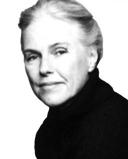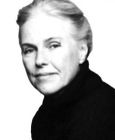Yesterday I heard Eric Kandel, the American neuropsychiatrist, recipient of the 2000 Nobel Prize in Physiology for his research on memory, lecture at Grand Rounds at the Psychiatric Institute at Columbia. He had been chosen by the residents to be their speaker, and he spoke on the close connections of art and science, a vast topic. He argued that by encouraging a dialogue between science and art we can expand our vision and obtain new insights into the nature of the creation of art.
It seemed to me an exemplary lecture, one that we could all learn from, and one which anyone in the audience could follow because of its clarity, precision, and erudition, of course, but also because of Kandel’s winning Viennese charm. He held us in the palm of his hand.
He began the lecture with some personal remarks on the similarities and differences with his own residency at Harvard more than half a century ago. He told us that he had been advised not to read! He admitted that the residents in his day felt that if they could get rid of their professors they would run the place much more successfully, remarks that got the audience laughing of course, and put us at ease.
All through the lecture he leavened the loaf with humor as well as with some titillating gossip on the lives of the artists ( the beautiful and brilliant Alma Mahler’s many affairs, including one with the artist, Kokoshka for example.)
From the start he was modest ( my work has not gone unnoticed—this Nobel Prize winner began) , and like Freud, he kept the language clear, his vocabulary simple, always saying, “As you will no doubt remember,” and filling us in on the necessary facts.
He followed with a brief but brilliant intellectual history going from the discoveries of the Enlightenment with its emphasis on rational thinking, through Darwin, to a clear description of Freud’s importance: the emphasis on the unconscious mind, childhood, and the fact that everything, every detail of life: gesture, facial expression, word is of importance. He spoke of where he felt Freud had gone wrong: on female sexuality and penis envy which he called cockamamie ideas! which once again had us all laughing.
He spoke of the medical school in Vienna during Freud’s time, the importance of some of his teachers like the great Carl von Rokitansky who had insisted on each dead patient being autopsied, performing many of these autopsies himself.
Then he launched into a description of the three artists he had chosen to speak about, all famous in Vienna in 1900: Klimt, Kokoksha, and Egon Schiele . He showed us several slides of their work to illustrate the importance of their discoveries and in particular the iconic portrait of Adele Bloch-Bauer for which Lauder had paid 135 million dollars, emphasizing that the images on the dress were not just decorative but all symbols of male and female cells thus representing sperm and oval eggs. These fertility symbols echo the sitter’s seductive face with suggestions of her reproductive capabilities. Speaking of Kokoschka he stressed the use of color, no longer to represent reality, but to convey emotion. He showed how the artist seemed to have incredible insight into the sitter’s illness even to the point of foreseeing a stroke from the way the hand was portrayed in the portrait. Another portrait of young children showed them for the first time not as idealized children but real creatures, conveyed with understanding and empathy, struggling with one another aggressively.
He showed us the importance of the face and what difficulty the computer has in recognizing it, also using studies with monkeys to show how necessary the eyes and the mouth are in bonding with the mother.
In his lecture Kandel managed to connect our understanding of the science of perception, memory, emotion and creativity, how we bring to a work of art our own past and experiences and also the past of our culture and heritage, in short what shapes our experience of art.
Sheila Kohler is the author of many books including the recent Dreaming for Freud.


